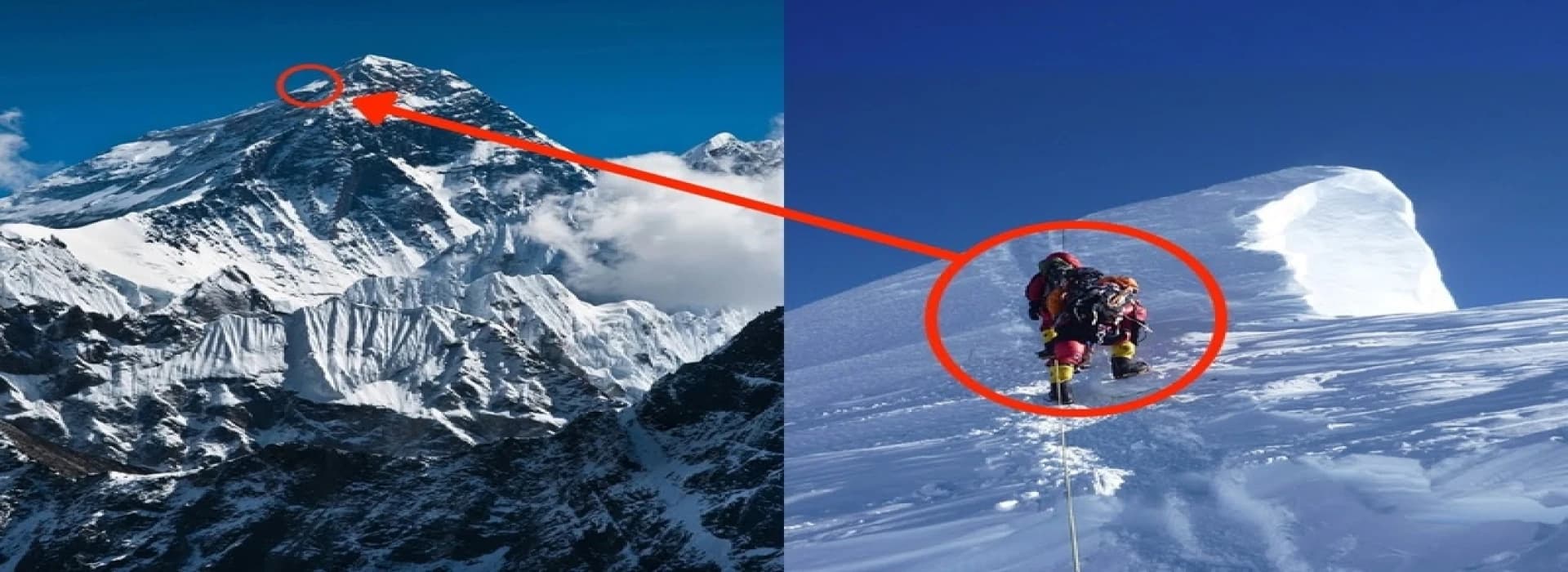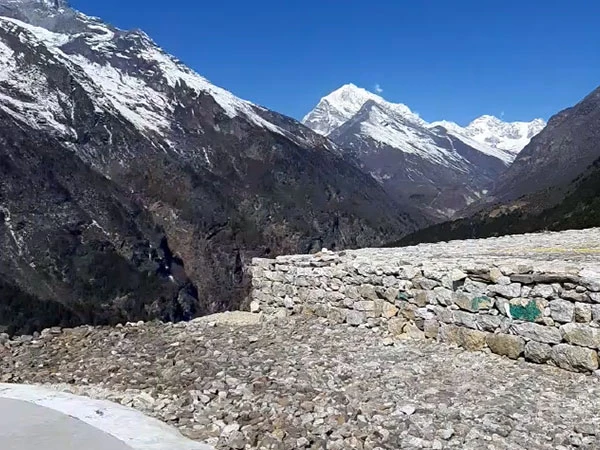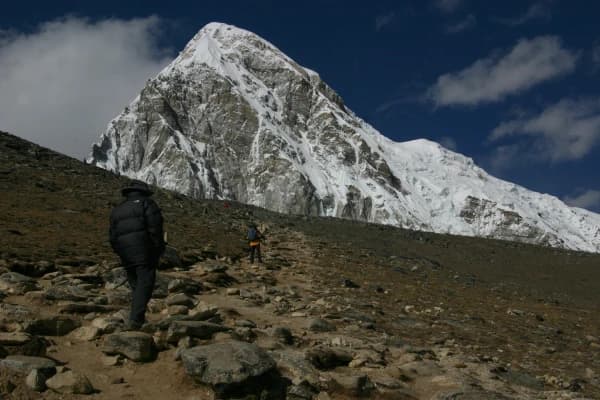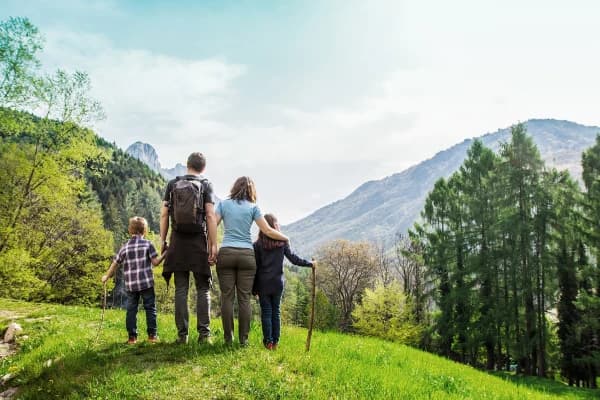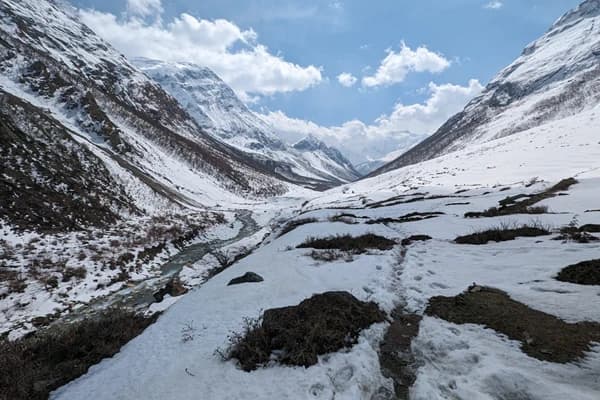The Hillary step was regarded as the most significant and technically challenging section located in the dead zone of Mount Everest just before reaching the summit. It was a 40 ft vertically inclined rock face situated at an altitude of 8,790 m above sea level on the Southeast Ridge of Everest. It lies halfway between the South summit and the true summit of Everest from the Nepal side of Everest expedition. Every Everest climber feared this section as the real last challenge before conquering the summit to the top of the world.
But everything changed after the devastating Nepal earthquake 2015, when the Hillary step was destroyed and revamped everything for the climbing community on a global scale. The real last challenge before Everest Summit no longer existed that had a significant role in the history of mountaineering and climbing.
The location of Hillary Step in the dead zone increased the difficulty of ascent or descent, not to mention its notorious vertical build which is renowned for its dramatic drops; 3000m and 2400m during the ascent on the South Col of the Everest.
Why is it called the Hillary step?
The Hillary step was one of the deadliest sections on the Death zone before reaching Everest Summit. It was a huge obstacle for Everest climbers to tackle. The step is named in the honor of Sir Edmund Hillary and his contribution towards the mountaineering community worldwide.
Sir Edmund Hillary, The legendary mountaineer from New Zealand alongside Tenzing Norgay Sherpa of Nepal were the first climbers ever to successfully reach the summit of Mount Everest in 1953. This was a huge milestone for human beings in general and how we expand our limits.
During their world renowned ascent to Everest while making the final push towards the summit, they came across an unnerving vertically faced rock about 40 ft high in the Death zone. Hillary was able to make his way through it by climbing a narrow crack between those rocks and snow while Tenzing assisted him from behind the whole time. This was regarded as the most technically challenging section right before the summit.
Later to honor their historic achievement, that significant section was called the “Hillary Step” which has been a landmark in the climbing history of Everest. The rest of the climbing community considers this landmark as a mythical status that resembles both the life threatening risks and courage it takes to be standing at the top of the world.
To this day, even after it collapsed, the Hillary step of Everest holds a significant value as a piece of mountaineering heritage that reminds us of all the hard work, courage and motivation it took to make the first ascent successful.
Why is the Hillary step so dangerous?
The way it is situated at approximately 8,790 m high and just 60 m below the summit on Everest Southeast Ridge i.e. between the South Summit and true summit answers our question why is it so dangerous. Not to mention its wild terrain with mixed rock, snow and ice increasing the challenges and risks of high altitude climbing.
Before it was damaged in 2015, The original form of the Hillary step was diabolical, a narrow rocky point jutted up from a sharp ridge with fatal exposure on both sides overall creating a dramatic view of the Himalayan beauty. It was near impossible to make a way through the summit making room for only one climber to do ascent or descent at a time possible. With the given scenario, It created long queues of climbers on summit day.
The exposure was a serious danger. On one side there was a steep drop into Nepal's Kangshung face and on the other a deadly fall into Tibet. The smallest of the smallest wrong decision could lead to life and death situations. No matter how experienced the climbers were, they all feared one section on the Everest Summit and it's the Hillary step.
The death zone itself is considered life threatening and demanding to climbers so when the Hillary step lies in this zone it makes everything 100 times challenging for climbers. Low levels of oxygen, dropping temperature levels, unpredictable weather changes, physical and mental exhaustion and challenging terrains all together makes Hillary step so dangerous.
But it is a different story now that the shape has shifted, still this psychological marker for climbers will forever capture the essence of those who had courage to climb it and prove the world Everest summit is possible. The Hillary Steps will forever remain in world history as a symbol of Everest’s might.
Why is the Hillary Step so popular among climbers?
The Hillary step came into the limelight after the successful summit of Everest by Sir Edmund Hillary and Tenzing Norgay Sherpa in 1953. The tackle through Hillary step is what added more global attention to this historic climb. Ever since the first summit was made possible, researchers navigating the Hillary step regarded it as a Symbolic gateway to the top of the world.
Passing through this section was a huge deal for climbers, just reaching the Hillary step meant giving everything you have left to be on top of the summit within a few minutes. If this final obstacle gets to an individual it means the summit was not successful. The struggle and stories, films and pictures of climbers who made it up to the Hillary step added more thrill and specialty to their achievement. To what the general public might see as just “a piece of rock” was actually a point of “life or death” to every climber of Everest.
Here are the several reasons in short is to why The Hillary step is popular:
- A symbolic threshold: Since the history of mountaineering, the Hillary step has been the ultimate test for Everest climbers to go past their limits. While not being physically there it remained a symbolic gateway to the top of the world, the end moments of suffering before the summit.
- Everest’s Might: The Hillary step represents the challenges and risks of high altitude climbing at Everest. This section reminds the climbers that climbing Everest is like playing with Death and how ruthless Everest actually is.
- Rich cultural significance: The Hillary step has remarked a cultural significance in the history of mountaineering globally. Whenever the topic of climbing is brought up, the Hillary step is always included as a major part of it, including mountain stories, documentaries, movies etc.
- Diabolical build: The unique geological feature of Hillary step is what made this section so deadly and notorious. The difficulty and effort necessary for climbers to pass through this section reinforced the already fierce reputation of Everest on a global scale.
Does the Hillary step still exist ?
Before & After the Earthquake
The images of Hillary steps from the early 2000s shows dissection as a jacked long rock wall and the terrifying build around it. But the pictures from 2016 and 2017 displayed conflicting concerns.
After the devastating earthquake in 2015 in Nepal, the hardest yet exciting section of Everest was damaged. The climbers returning from the summit in following years reported this devastating news: The once vertical-faced long rock has now turned into snow and debris perished on Everest. This caused a huge alteration on the Everest Summit expeditions and difficulty for climbers.
The disaster was able to hit the most remarkable feature of Everest and now that it's gone, its symbolic representation still haunts the mind of climbers thinking what they would have done if they were to face the terrifying terrain of the Hillary step.
The climbing community definitely experienced the most change after the loss of Hillary step. But there's still a bottleneck and delays occur due to the increasing number of climbers. The climbers at the step are encountered with high traffic due to the narrow climbing season.
The history of Hillary step remains in every documentary, story, photos and movies when it comes to mountaineering and climbing. It will forever be a remarkable section in the history of the Himalayas.
What's the controversy behind the Hillary step?
The following year after the devastating earthquake 2015, The climbers returning from the summit reported contrasting opinions on what happened to the Hillary step. Some climbers claimed that the original structure of vertical rock had either collapsed completely and now turned into a snowy slope. Whereas, some reported that it was just covered in heavy snow and debris so it looked different.
The pictures from the 2000s were compared with the ones taken in 2016 or 17 and the difference was identifiable as once a long vertical rock was now appearing to be a snowy slope in the same location. Famous climbers like Tim Mosedale reported that “the Hillary step is no more” after his summit in 2017.
Before any official statements were made about the Hillary step, a lot of contrasting opinions were raised. Not until 2019 when the Nepalese Department of Tourism stated that the Hillary step has indeed changed significantly. However they never declared it as a completely collapsed situation and just a few physical alterations.
Since the original form is no longer visible, it has officially been claimed that the Hillary Step is changed forever. But it does not change the fact that it will forever remain legendary in the world history of climbing.
How has the collapse of the Hillary step affected climbing Everest?
Is it the same as the original experience of climbing Everest with the Hillary step or has it been easier now that it no longer exists….? It has now turned into a subjective matter. Some claim that it is just as dangerous and some argue that it has been much easier and less significant.
Before the 2015 earthquake in Nepal, the 40 ft long vertically faced rock required professional and technical climbing skills, quality experience and training to be able to face it successfully. Not that it is not necessary now, It was just more physically demanding and the terrain was significantly more challenging compared to what now is a steep snowy slope. So now climbing The Hillary step is not considered as dramatic as It was considered in its original form.
To its contrast the new route isn't necessarily easy either. Climbing on snow and icy areas is less stable than rocks. It invites more risks for slipping and avalanche triggers,the situation gets worse especially during crowded Summit pushes on climbing seasons where one mistake leads to another.
The challenge of geographical build of the Hillary step might have been less but the icy terrain, risk of high-altitude climbing and harsh weather are still very much present making the expedition to the summit of Everest yet one of the most challenging climbing quests in the world.
In comparison, the risks of climbing the Hillary step is in fact less after it collapsed making the Everest climb a lot more easier now. However it still demands physical and mental effort and tests your limits in ways you cannot imagine.
Why does Everest have a bottleneck?
The challenging geography of the Hillary step caused only one climber at a time to ascend or descend properly. Due to this huge delays and queues it was causing long waits during peak Summit time. The Climbers had no choice but to patiently wait for their turn to ascent or descent.
After the Hillary step was damaged in 2015, the section became a broader snow slope. The climbers believe the traffic at the summit would no longer exist and the expeditions run smoothly. However it did not turn out that way. The climbing section of the Hillary step still leads to bottlenecks especially when climbers on the front line move slowly.
Even after the significant change on the most challenging section of the Everest Summit the crowding problem still remains unsolved and a risky problem. Crowding at the death zone can lead to loss of many lives with just simple mistakes.
Just imagine having to wait in line at approximately 8,800 m high with low oxygen level barely able to breathe, increasing risk of frostbites, exhaustion and altitude sickness. All while keeping an eye open for the dramatic changes of Mother Nature. Definitely a bummer!! Worst case scenario, these delays might lead to serious fatalities.
Too minimize and manage these issues It mostly concerns effective planning and following discipline. Even though the new route may look easier, if teams lap their summit pushes especially on busy days you are bound to face traffic problems and pray for your life.
Now that the Hillary step’s alteration has transformed the climbing experience on Everest, The challenge still remains alive. Doesn't matter if it's a long vertical rock or steep snow section, you are bound to face the challenges it comes with to reach to the top of the world. That final push right before the summit pushes every climber to its limits in every way possible.
Final Words,
The most challenging and dangerous sections on Everest “the Hillary Step” has managed to maintain its legacy in the world history of climbing and mountaineering despite its absence of physical presence. It will forever be a significant landmark as a gateway to the summit of Everest and continue to reflect the grandeur of Everest and how mighty it is.
Despite being aware of how treacherous and relentless Everest can be, despite hearing complex, mythic and legendary stories of past mountaineers; people from different parts of the world long to climb to the top of the world and achieve their quests.
Are you fascinated by this iconic feature on Everest as much as we are ? Are you looking to trek in the Everest region? Do you dream of summiting it one day? We'd love to hear your thoughts and share information.
Drop a comment below or feel free to reach us out on www.ammoniteadventure.com where we make your dream journey come true.
FAQ’s About the Hillary Step
What is the Hillary step on Everest?
Hillary step is a steep snow section located 60 m below the summit of Mount Everest, at 8,790 m in the Death zone. This section is named in the honor of Sir Edmund Hillary (first person to summit Everest along with Tenzing Norgay Sherpa). This section was the major and final push before reaching the summit, also one of the most challenging ones.
How long does it take to climb the Hillary step?
In its original form, It normally takes about 10 to 20 minutes for an experienced climber to climb this section. The Hillary step could be climbed under favorable climatic conditions.
However due to traffic, unfavorable weather conditions, and all the mental and physical exhaustion at the death zone can take more than the usual time for average climbers.
Where is the Hillary step located on Everest?
The Hillary step is located on the southeast Ridge of Mount Everest. It is just halfway between the South Summit and the true summit. It is a rocky outcrop that is located at an elevation of approximately 28,000 ft.
The exposure on this section is a huge concern as it is very challenging, characterized by its steep angle and low oxygen levels at high altitude overall enhancing the challenge of the summit.
How long is the Hillary step?
This section on Mount Everest is 12 m long and is 39 ft from sea level. It is a vertical rock face that is considered a significant obstacle for climbers headed for Summit. This Rocky and snow step lies between the South Summit and the actual summit of Everest from Nepal's average side.
The frightening altitude of 8,790 m where it is located and the extreme weather around it makes the expedition more exciting yet life threatening. With proper safety measures and good preparations climbers can slowly but definitely reach the summit.
Is climbing the Hillary step today easier than before?
On a technical point of view, yes. After the vertical rock wall has been replaced by a steep snow slope it has been a lot easier for climbers to ascend since it requires less skill.
However it invites new risks like slipping, triggering small avalanches etc testing the climbers limit in new ways.
Do climbers still pass the Hillary step?
Despite its change after the earthquake of 2015, The area still remains there and it still is the part of the route to Everest summit, just in a different form.
Is the Hillary step ever going to be restored?
Artificial crafts might have been developed and evolved over years of industrialization however it is unlikely to replicate nature to its realist form.
Also it was destroyed due to natural disaster itself so it is just one of the processes of mother nature to evolve and grow new places we have no option but to accept as it appears.
Nature changes its shape as time passes and unless more rock is exposed over time, it remains as it is.

